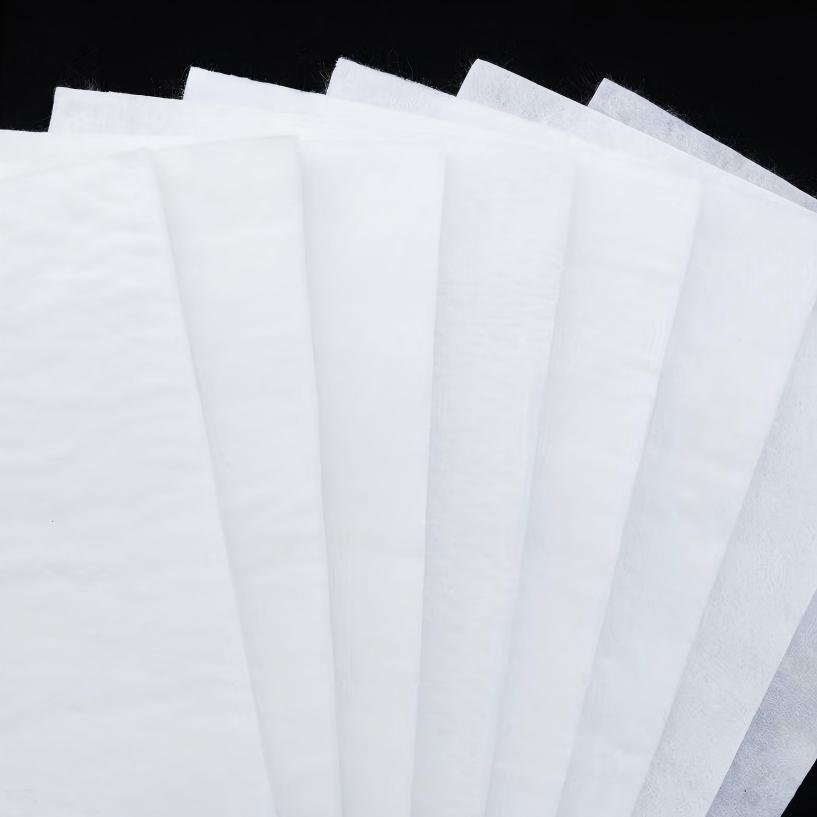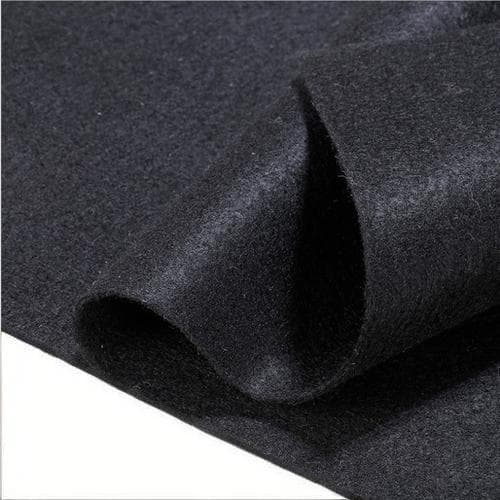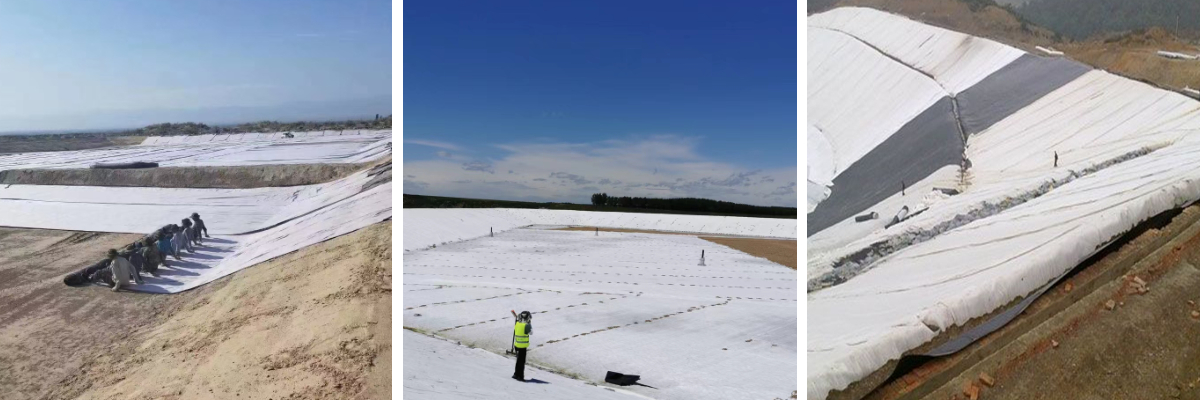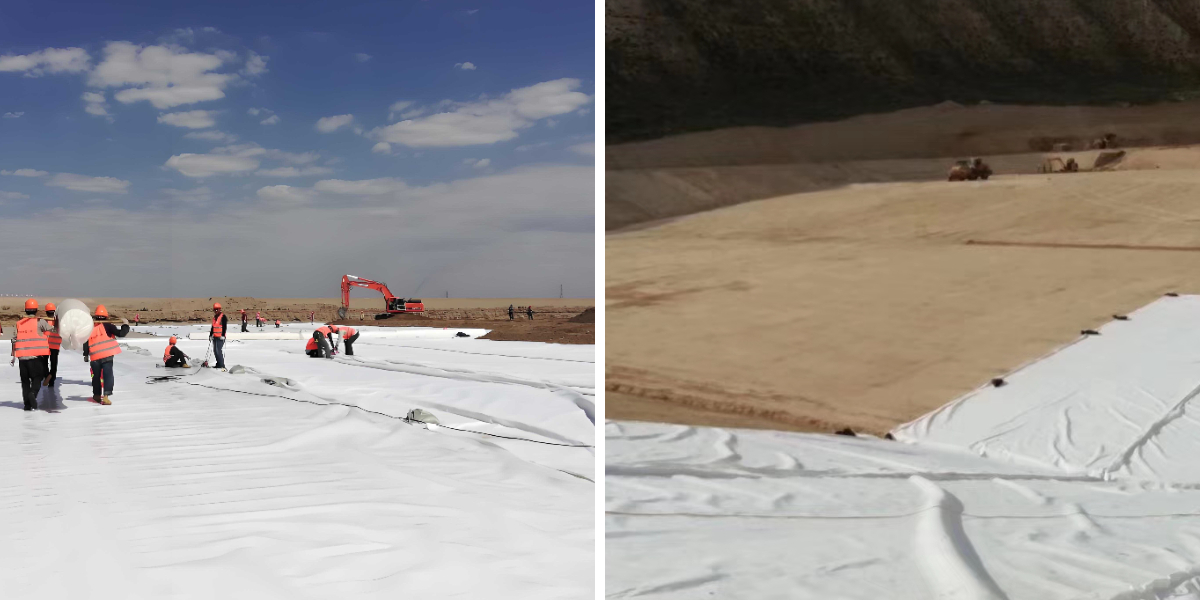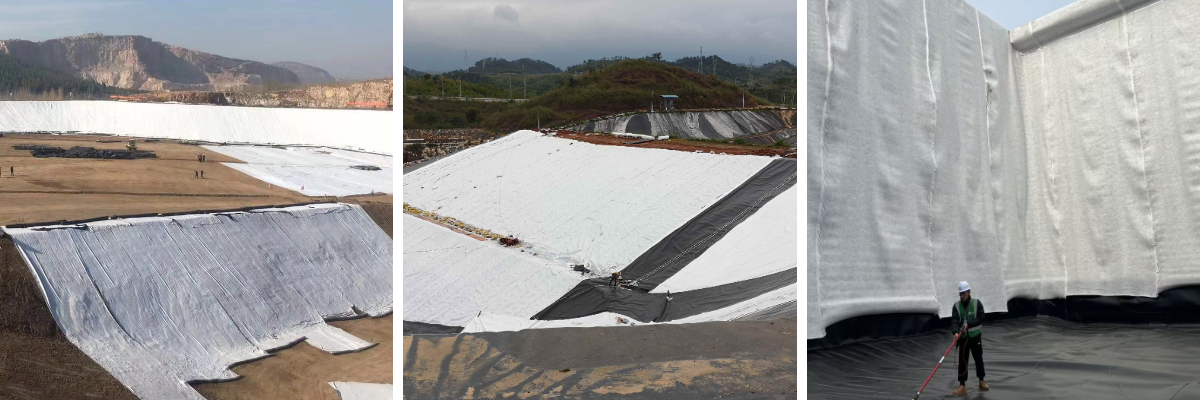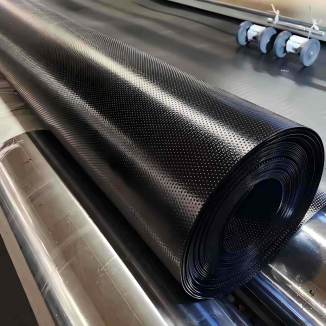Geotextile Fabric for Leach Field
1. Precise filtration and blocking: with a pore size of 0.02-0.1mm and a fine soil retention rate of 99%, it prevents the collection system from being blocked and ensures the smooth flow of leachate.
2. Corrosion and hydrolysis resistance: resistant to acid, alkali, and microbial erosion, stable in pH 2-12 environment, with a service life of 10-15 years.
3. Strong and adaptable: Tensile strength of 15-40kN/m, tear resistance of ≥ 3kN, suitable for irregular terrain, and resistant to foundation settlement.
4. Separation and Drainage Balance: With a permeability coefficient of ≥ 1 × 10 ⁻ cm/s, the filtrate is quickly discharged while isolating pollution and protecting the surrounding environment.
Products Introduction:
Geotextile Fabric for Leach Field is a functional geosynthetic material designed specifically for leachate collection and treatment systems in landfills, sewage treatment plants, and other facilities. It is made from polyester (PET) or polypropylene (PP) filaments and processed using needle punched non-woven or spunbond techniques. Some products undergo chemical corrosion and biodegradation resistance treatments. Its core function is to lay it between the leachate collection layer (such as sand and gravel, perforated pipes) and the surrounding soil. Through the triple functions of "precise filtration, isolation protection, and drainage guidance", it prevents soil particles from blocking the collection system and protects the surrounding environment from leachate pollution. It is a key material to ensure the long-term stable operation of the leachate site.
The core advantage of this product compared to ordinary geotextiles lies in its strict control over "corrosion resistance" and "filtration accuracy". It can maintain stable performance in special environments with high concentrations of pollutants and humid anaerobic conditions, and is suitable for the complex needs of various leachate treatment scenarios.
Product Features:
1. High precision filtration to prevent system blockage: The fabric pores are specially designed (with a pore size of 0.02-0.1mm), and the retention rate of fine soil particles is as high as 99%. It can effectively prevent small particles in the surrounding soil and sand from entering the leachate collection pipeline or sand layer, avoiding a decrease in collection efficiency or even system paralysis caused by blockage. At the same time, the pore distribution is uniform and has a certain degree of elasticity, making it difficult for pollutants to adhere and block after long-term use, ensuring smooth infiltration of leachate.
2. Chemical corrosion resistance and biodegradation resistance: Using high polymer materials that are resistant to acid and alkali and organic solvents, and adding specialized antimicrobial agents, it can withstand erosion from high concentrations of pollutants such as COD, BOD, heavy metal ions in leachate, as well as the decomposition of microorganisms in anaerobic environments. In extreme environments with pH values of 2-12, the tensile strength retention rate is ≥ 80%, and the service life can reach 10-15 years, far higher than that of ordinary geotextiles.
3. High strength tear resistance and adaptability to site deformation: The longitudinal/transverse tensile strength reaches 15-40kN/m, and the tear resistance strength is ≥ 3kN. It can withstand the tensile force generated by foundation settlement and soil displacement in the infiltration site, avoiding filtration failure caused by material damage. At the same time, the texture is flexible and can closely adhere to the irregular contours of the collection system (such as around the pipeline and changes in slope), ensuring no blind spots for protection.
4. Balance between permeability and isolation: The permeability coefficient is ≥ 1 × 10 ⁻ cm/s, which can quickly guide the leachate into the collection system and avoid retention between the soil and the collection layer; As a physical barrier, it isolates the leachate from the surrounding clean soil and groundwater, preventing the spread of pollutants and reducing environmental risks.
Product Parameters:
project | metric | ||||||||||
Nominal strength/(kN/m) | |||||||||||
6 | 9 | 12 | 18 | 24 | 30 | 36 | 48 | 54 | |||
1 | Longitudinal and transverse tensile strength / (kN/m) ≥ | 6 | 9 | 12 | 18 | 24 | 30 | 36 | 48 | 54 | |
2 | Maximum elongation at maximum load in longitudinal and transverse directions/% | 30~80 | |||||||||
3 | CBR top penetration strength /kN ≥ | 0.9 | 1.6 | 1.9 | 2.9 | 3.9 | 5.3 | 6.4 | 7.9 | 8.5 | |
4 | Longitudinal and transverse tearing strength /kN | 0.15 | 0.22 | 0.29 | 0.43 | 0.57 | 0.71 | 0.83 | 1.1 | 1.25 | |
5 | Equivalent aperture O.90(O95)/mm | 0.05~0.30 | |||||||||
6 | Vertical permeability coefficient/(cm/s) | K× (10-¹~10-), where K=1.0~9.9 | |||||||||
7 | Width deviation rate /% ≥ | -0.5 | |||||||||
8 | Unit area mass deviation rate /% ≥ | -5 | |||||||||
9 | Thickness deviation rate /% ≥ | -10 | |||||||||
10 | Thickness coefficient of variation (CV)/% ≤ | 10 | |||||||||
11 | Dynamic perforation | Puncture hole diameter/mm ≤ | 37 | 33 | 27 | 20 | 17 | 14 | 11 | 9 | 7 |
12 | Longitudinal and transverse fracture strength (grab method)/kN ≥ | 0.3 | 0.5 | 0.7 | 1.1 | 1.4 | 1.9 | 2.4 | 3 | 3.5 | |
13 | Ultraviolet resistance (Xenon arc lamp method) | Longitudinal and transverse strength retention rate% ≥ | 70 | ||||||||
14 | Ultraviolet resistance (fluorescence UV lamp method) | Longitudinal and transverse strength retention rate% ≥ | 80 | ||||||||
Product Applications:
1. Landfill leachate system: It is laid between the leachate collection layer (sand and gravel+perforated pipes) above the anti-seepage membrane at the bottom of the landfill and the surrounding soil, which not only filters and prevents soil particles from blocking the collection pipeline, but also isolates the leachate from the surrounding area of the anti-seepage membrane, protecting the integrity of the anti-seepage system and adapting to municipal solid waste (urban household waste) and industrial waste (industrial waste) landfills.
2. Infiltration zone of sewage treatment plant: It is laid around the infiltration tank and oxidation pond of the sewage treatment plant as a secondary protective layer, filtering the soil around the tank body to prevent the infiltration of leachate and pollution of groundwater. At the same time, it reduces the maintenance frequency of the tank body caused by soil particle invasion, and adapts to the low-cost operation needs of small and medium-sized sewage treatment plants.
3. Leachate drainage of hazardous waste disposal center: used between the rigid anti-seepage layer and the buffer layer of the hazardous waste disposal center. With its chemical corrosion resistance, it resists strong corrosive substances in the hazardous waste leachate, and accurately filters the sand and gravel in the buffer layer to ensure the smooth flow of the drainage system and reduce the environmental risk of hazardous waste leakage.
4. Agricultural waste disposal site: Lay in the leachate collection ditch of agricultural waste composting sites such as livestock manure and straw, filter the surrounding farmland soil to prevent channel blockage, and isolate the leachate from farmland soil to prevent nitrogen, phosphorus and other pollutants from infiltrating farmland and protect the agricultural ecological environment.
Geotextile Fabric for Leach Field focuses on the special environment and core requirements of leachate sites, with the core advantages of "high-precision filtration to prevent clogging, strong corrosion resistance and degradation resistance, high strength adaptability to deformation, isolation and protection to protect the environment", providing reliable material support for leachate collection and treatment systems. Whether it is the large-scale application of landfills or high-risk scenarios in hazardous waste disposal centers, targeted performance design can balance the two goals of "system smoothness" and "environmental safety".
The product combines functionality and durability, which can reduce the maintenance cost of the leachate system and effectively prevent environmental pollution risks. It is a key material for achieving "safe disposal and green protection" in modern environmental engineering, providing important technical support for waste disposal and ecological environment protection.


